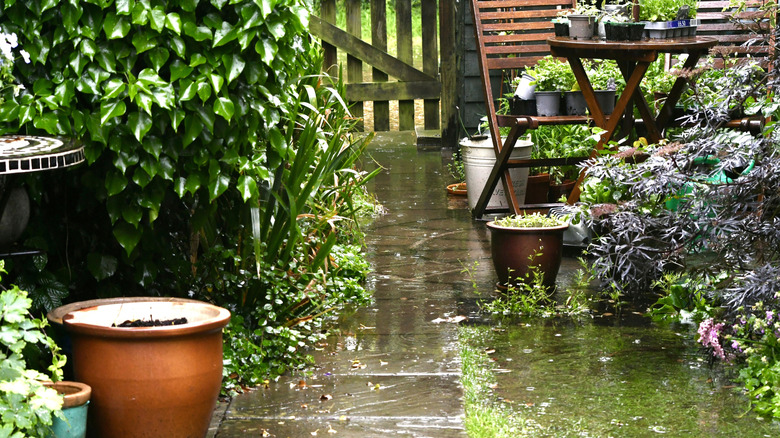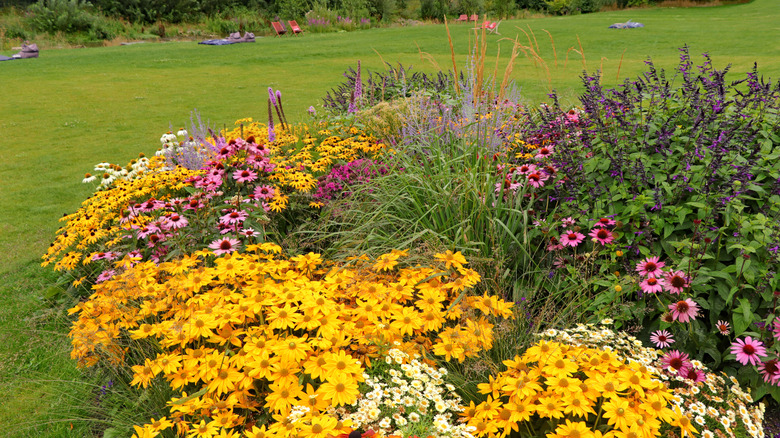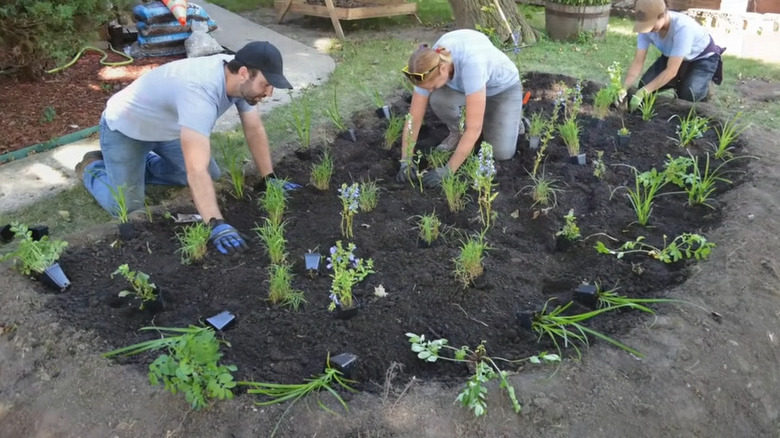The Smart Solution For Excess Stormwater Flooding Your Yard
As cities around the world face growing water conservation challenges, smart stormwater management is becoming both an environmentally friendly and practical solution. Whether you live in a desert area prone to flash flooding or a suburb in the Midwest, strong stormwater surges can cause significant damage: Excess stormwater causes problems like foundation damage, basement flooding, and soil erosion. And while many homeowners are turning to options like rain barrels and water catchment systems to manage stormwater, these won't help when a big one hits — and that's where rain gardens come in.
Rain gardens are one of the best stormwater drainage solutions for your home, capturing excess water and returning it safely to the ground. When properly installed, they supply enough water to sustain many types of plants. They also protect nearby water sources from the harmful effects of pollutants in runoff and soil erosion.
Rain gardens are designed to receive large quantities of water every time it rains, coming from impervious surfaces like roofs, driveways, lawns, and sidewalks. For every square foot of water catchment area in your yard, approximately 0.6 gallons of water can be collected per inch of rain. In some cases, you may even have to contend with a neighbor's runoff. Whether or not your municipality has strict regulations for handling stormwater on residential property, rain gardens are the perfect solution for this problem, offering benefits like reduced erosion, protection for home foundations, and more sustainable landscaping.
Planning a rain garden for stormwater management
Since they are so beneficial to the environment, engineers and civil planners in many parts of the world recommend rain gardens to address stormwater issues. While rain gardens require a little planning and work for the best results, there is no shortage of online resources if you're interested in building one. Most rain gardens are between 100 and 300 square feet, but they can be larger than that if you have the space. Generally, your rain garden should be about 20% the square footage of your catchment area. Although rain gardens are typically only 4 to 8 inches deep, they can also be placed in depressions in your yard as long as the area drains properly.
Rain gardens not only catch water, but they also act like a sponge to absorb and hold it for long periods. However, that doesn't mean standing water, since effective rain gardens are designed to drain within about 12 hours after a rain. (This is why you don't have to worry about mosquitoes.) Make sure your rain garden is at least 10 feet from building foundations and septic systems, and if necessary, check with your local planning department to determine local regulations beforehand. Since you'll be digging, don't forget to call your utility departments. Then, once you're ready, you can start building and maintaining your rain garden.
Installing and maintaining a rain garden
After you're finished with the planning stage, you can start the installation by laying out the rain garden shape using stakes, lines, or paint. Then, excavate the area up to 12 inches deep in the lowest spot. If you divert any drains into your rain garden, make sure to line the inlets with rocks. Also, since your rain garden may fill up at times, you should have a rock-lined overflow to accept the runoff and prevent erosion.
Since the goal is to catch water and allow it to drain naturally, don't compact the soil. Level the bottom of the rain garden, and add a rain garden soil mix to the area. Now it's time to bring it to life with rain garden plants. The right mix of ornamental grasses, flowering perennials, shrubs, and trees will make your rain garden more resilient and easier to manage over time.
While plants take time to establish, you should be able to grow many of them without additional water inputs after the third year. During the first couple of years, use soaker hoses if you need to water your rain garden. These gardens require minimal upkeep, but they're a little different than regular gardens. Check them regularly for deposits of sediment and take care of erosion problems quickly by adding rocks. To keep your rain garden looking its best, you'll also need to replenish mulch every year and take care of weeds as they appear.


